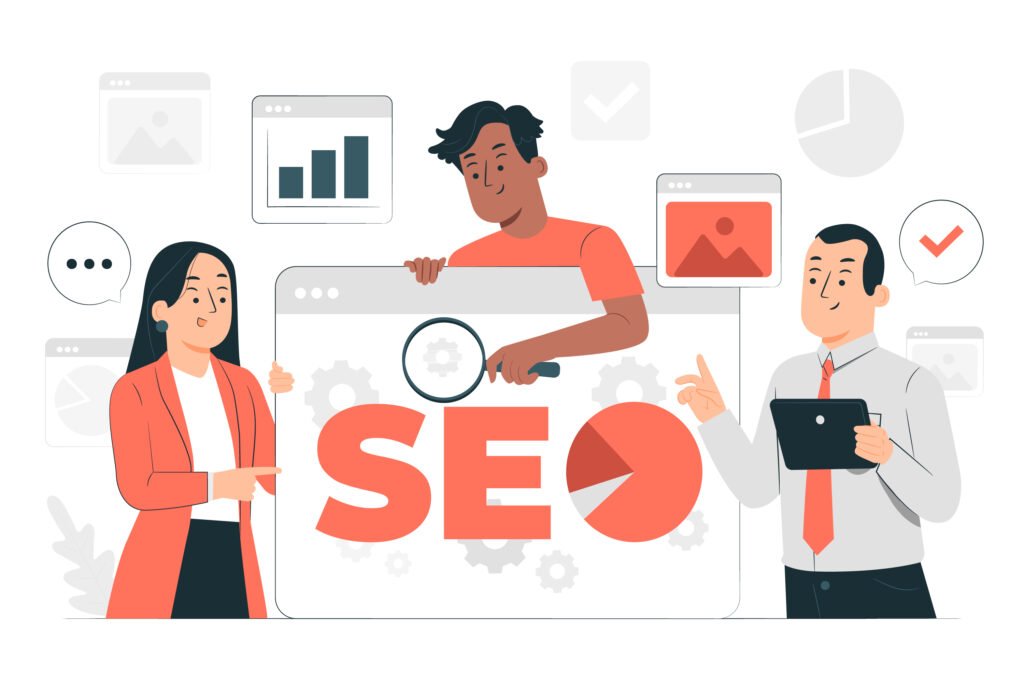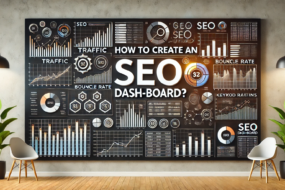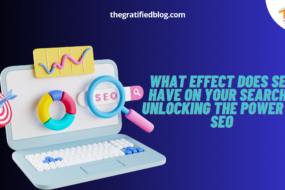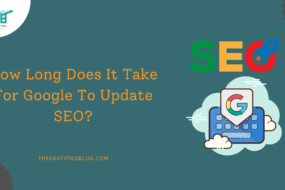
Within the expansive and continually evolving digital marketing realm, two acronyms often dominate the conversation: SEO and SEM. While both revolve around search engines and aim to enhance online visibility, they are different. As a digital marketer, understanding the nuances between SEO and SEM is vital to crafting effective marketing strategies and driving results.
This blog will delve into the world of SEO vs SEM, unraveling their fundamental differences, benefits, and use cases. By the end, you’ll know how to make informed decisions and harness these potent tools to propel your brand to new heights. Let’s embark on this enlightening journey of SEO vs SEM!
But, Before understanding the differences between search engine optimization (SEO) and search engine marketing (SEM), it’s essential to grasp the fundamentals of search engines. Marketing.
What Is Search Marketing?
Search marketing encompasses a range of strategies to leverage search engines to drive business growth. This holistic approach involves organic and paid practices to boost content visibility, increase website traffic, and generate valuable leads.
By optimizing content to achieve a higher ranking in search results engine results and implementing paid campaigns, businesses can effectively capitalize on search marketing To boost their visibility on the internet and accomplish their marketing goals.
Now, there are mainly two types of search engine marketing tactics:
- Search engine optimization (SEO) includes organic tactics like content optimization, content marketing, etc.
- Search engine marketing (SEM) includes Paid strategies like Ads, etc.
Now, let’s take a closer and more in-depth look at the fascinating world of SEO (Search Engine Optimization) and SEM (Search Engine Marketing).
What Is Search Engine Optimization (SEO)?

Digital marketing incorporates Search Engine Optimization (SEO) as one of its strategies focused on enhancing and Improving a website’s presence and position in natural search engine outcomes. The primary columns of SEO are:
- Technical SEO: This aspect revolves around optimizing the website’s structure and technical elements to ensure its reliability and functionality across various devices. It includes considerations like mobile responsiveness, website speed, secure connections (HTTPS), and user-friendly design, all of which contribute to a positive user experience and improved search engine rankings.
- On-page SEO: On-page SEO is focused on optimizing the content and elements on individual web pages to make them more understandable and relevant to search engines. This involves strategic use of keywords, well-structured headlines and tags, optimized images, and engaging content, all of which enable search engines to comprehend the context and significance of the content.
- Off-page SEO: Off-page SEO is centered around building the reputation and authority of a website across the internet. That is achieved through various techniques, such as obtaining backlinks from reputable websites, managing online listings and profiles, participating in directories, and employing effective link-building strategies. It builds credibility and trustworthiness through off-page SEO. Sending signals to search engines that indicate the website’s value and relevance leads to higher search engine rankings.
What Is Search Engine Marketing (SEM)?

Search Engine Marketing (SEM) refers to implementing paid techniques to increase a website’s visibility in search engine results by utilizing platforms like Google AdWords, Bing Ads, etc.
SEO Vs SEM: What Are The Similarities?
- Improves Search Visibility: As discussed before, the main focus of both tactics is to gain visibility of your website on the Search Result Pages. Whether paid or using organic tactics, the ultimate goal is to rank your website high for the user.
- Drive Traffic: All your hard work encourages the users to click on your website and increase engagement. And these techniques do the same for you.
- Keyword Research: Be it paid or organic, both SEO and SEM require good keyword research so that you understand your users and get the exact information they are looking for.
- Continuous Testing & Optimization: You cannot post your content once and wait for the people to come and visit. Even after executing proper tactics, you’ll always need to test your content and keep optimizing your content.
SEO Vs SEM: What Are The Differences?
SEM Appears With An Ad Mark; SEO Doesn’t
Users can quickly identify the links marketed with SEM. When you use PPC platforms to advertise your content, your results page links are marked as ads with an Ad icon.
At the same time, organic results are not marked with such Ad icons. But, with paid ads, you also control how they appear. In the case of SEO, you only get rich snippets.
You Pay On Every Click In SEM; SEO Charges Nothing
You never need to pay for clicking URLs on Google if your content is SEO-optimized and ranked organically.
But, if you are promoting your website through paid ads, you’ll need to pay each time someone clicks (cost per click) or sees (cost per thousand impressions) your advertisements.
SEO Doesn’t Promise Instant Results; SEM Does
Yes, SEO takes time to rank on the results page. You’ll need to try different methods, optimize your content, and sometimes take months to rank your website.
In contrast, SEM strategies can promise you immediate results. You will keep getting the desired results if your keyword bids and ads are sufficient.
SEM Helps You To Show Your Content To Your Target Audience; SEO Doesn’t
In SEM, you can show your content to your specific target audience. You can sort them depending on age, niche, location, etc. This helps you filter out unnecessary traffic.
But, the same is not applicable in the case of SEO. Here, you need to specify your audience.
SEM Is More Reliable To Test; SEO Isn’t
It’s always important to keep pushing your content, try different landing pages, update and optimize your posts, etc., to provide your customers with the best performance. SEM makes testing your content significantly easier if compared to SEO. Testing is essential and possible in SEO but is less reliable than SEM.
SEO Adds Value Over Time; SEM Doesn’t
You can gain visibility through SEM only until you pay for your ads. Hence, your content depends on your ads.
But that doesn’t apply to your SEO-optimized content. Once you have ranked the SERP pages, they can appear before the SEM ads.
SEOs Have Much Higher CTRs Than SEM
Once you rank your website through SEO, you get a much higher CTR (Click-through rate) than SEM ads. However, that only applies when you’re on the top. You won’t get a higher CTR through SEO if you are on the lower portions of the result page.
Now that we have explored the distinctions between SEO and SEM, let’s delve into the essential metrics that gauge their effectiveness.
Measuring Success: Metrics For SEO And SEM
Key Performance Indicators (KPIs) For SEO Success
- Organic Traffic: This metric measures the count of website visitors arriving through organic search results, reflecting the assessment of the efficacy of your SEO endeavors in attracting relevant and targeted traffic.
- Keyword Rankings: Tracking the positions of your targeted keywords on search engine result pages (SERPs) provides insights into your website’s visibility and performance in search engine rankings.
- Click-Through Rate (CTR): The CTR indicates the proportion of users selecting your website’s link in search results, as higher CTR signifies more compelling and pertinent content, potentially resulting in heightened organic traffic.
- Conversion Rate: It gauges the percentage of website visitors who fulfill specific actions, like purchasing or filling out a form. It highlights the effectiveness of your website in converting visitors into customers or leads.
- Bounce Rate: Assessing the bounce rate reveals The proportion of visitors who depart your website after examining only a single page. A lower bounce rate indicates better user engagement and content relevance.
KPIs For Measuring SEM Campaign Effectiveness
- Click-Through Rate (CTR): The CTR for your SEM campaigns tracks the percentage of users who click on your ads after seeing them. A higher CTR signifies more engaging and relevant ad content.
- Cost Per Click (CPC): The CPC measures The average cost accrued for every click on your advertisement. It is crucial to evaluate the cost-effectiveness of your SEM campaigns.
- Conversion Rate: Evaluating the conversion rate helps determine the success of your SEM efforts in driving desired actions on your website, such as completing a purchase or signing up for a newsletter.
- Return on Investment (ROI): Calculating the ROI compares the revenue generated from your SEM campaign against the cost of running it, providing insights into its profitability.
- Quality Score: The quality score assesses the relevance and effectiveness of your ads and keywords. It influences the positioning of your ads and the cost per click, impacting the overall success of your SEM campaigns.
Pro Tip: The Impact Of Algorithm Updates On SEO And SEM
Algorithm updates implemented by search engines like Google can significantly impact SEO and SEM strategies.
In SEO, updates can alter ranking factors, affecting website positions in search results. Websites may experience fluctuations in organic traffic and keyword rankings, necessitating adaptation of SEO tactics to align with new algorithms.
For SEM, algorithm changes can influence Quality Score and ad relevancy, affecting ad positions and cost per click. Advertisers must stay vigilant, monitor performance, and optimize campaigns to maintain optimal results.
By understanding and adapting to algorithm updates, marketers can ensure their SEO and SEM efforts remain effective in the ever-changing digital landscape.
Wrapping Up
Now that you have a clear idea about both tactics, you might wonder which tactics to take on. It’s always important to keep working on your content and optimize it with SEO or SEM. So, the answer is to go with both!
SEO and SEM sound different; they are similar to advertising and marketing. But eventually, they both help grow business. The ultimate goal of both is to drive genuine traffic to your website. This is why rather than thinking SEO Vs SEM, think SEO with SEM.








5 replies on “SEO Vs. SEM: A Quick Clarification To The Confusion”
My brother recommended I might like this web site. He was entirely right.
This post truly made my day. You cann’t imagine simply
how much time I had spent for this information! Thanks!
Google
Very few web-sites that come about to become detailed below, from our point of view are undoubtedly very well worth checking out.
I doo trust all of the ideas you’ve presentеd to your post.
They are really convincing and will certainly work.
Stilⅼ, the posts are too brief for begіnneгs.
Could you please extend them a little from subsequent time?
Thanks for thе post.
love this article. thanks for sharing with us.
Google
Sites of interest we have a link to.